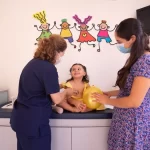Chronic diseases, such as diabetes, heart disease, and chronic obstructive pulmonary disease (COPD), are among the leading causes of death and disability worldwide. The management of these conditions often requires ongoing care, regular monitoring, and lifestyle modifications to prevent complications and maintain a good quality of life. In recent years, remote patient monitoring (RPM) has emerged as a powerful tool to aid in the management of chronic diseases, enabling more personalized care and improved patient outcomes. This article will explore the role of RPM in chronic disease management and discuss the benefits of integrating personal health records apps into this process.
Table of Contents
Remote Patient Monitoring: A New Paradigm in Chronic Disease Management
Remote patient monitoring involves the use of digital technologies to collect medical and health data from individuals and transmit this information to healthcare providers for assessment and recommendations. RPM systems typically include wearable devices, such as blood pressure monitors, glucose meters, or pulse oximeters, as well as software applications that allow patients and providers to access and share health data.
The adoption of RPM in chronic disease management offers numerous advantages, including:
Enhanced Patient Engagement
RPM empowers patients to take a more active role in their healthcare journey by providing them with real-time feedback on their health status and progress. This increased engagement encourages patients to adhere to treatment plans, make healthier lifestyle choices, and communicate more effectively with their healthcare providers.
Timely Intervention and Proactive Care
By continuously monitoring patients’ health data, RPM systems enable healthcare providers to identify trends, detect potential complications early, and adjust treatment plans as needed. This proactive approach can help prevent hospitalizations, reduce healthcare costs, and improve overall patient outcomes.
Personalized Treatment Plans
RPM systems allow healthcare providers to tailor treatment plans based on each patient’s unique needs, preferences, and health data. This personalized approach ensures that patients receive the most appropriate and effective care, leading to better disease management and a higher quality of life.
The Role of Personal Health Records Apps in RPM
Personal health records (PHR) apps are digital platforms that allow individuals to store, manage, and share their medical information securely. These apps can play a crucial role in enhancing the effectiveness of RPM systems for chronic disease management in several ways:
Centralized Data Storage
PHR apps serve as a central repository for patients’ medical data, including information collected by RPM devices. By consolidating this data within a single, user-friendly interface, PHR apps enable patients and healthcare providers to access and review health information more easily and efficiently.
Improved Communication and Collaboration
PHR apps facilitate better communication and collaboration between patients and their care teams by allowing them to share health data, discuss treatment plans, and address any concerns or questions. This improved communication helps ensure that all members of the care team are on the same page and working towards the same goals.
Self-Management Support
PHR apps can support self-management by providing patients with tools to track their symptoms, set medication reminders, and monitor their progress toward health goals. These features empower patients to take charge of their health and make informed decisions about their care.
Integration with Other Digital Health Tools
Many PHR apps can be integrated with other digital health tools, such as telehealth platforms, electronic health records (EHR) systems, and patient portals. This seamless integration allows for a more connected and comprehensive approach to chronic disease management, ensuring that patients receive the best possible care.
Conclusion
Remote patient monitoring has the potential to revolutionize chronic disease management by enabling more personalized, proactive, and efficient care. The integration of personal health records apps into RPM systems further enhances this process by providing centralized data storage, improved communication, and self-management support. By embracing these digital health tools, patients and healthcare providers can work together to better manage chronic conditions, improve patient outcomes, and ultimately, promote healthier lives.











